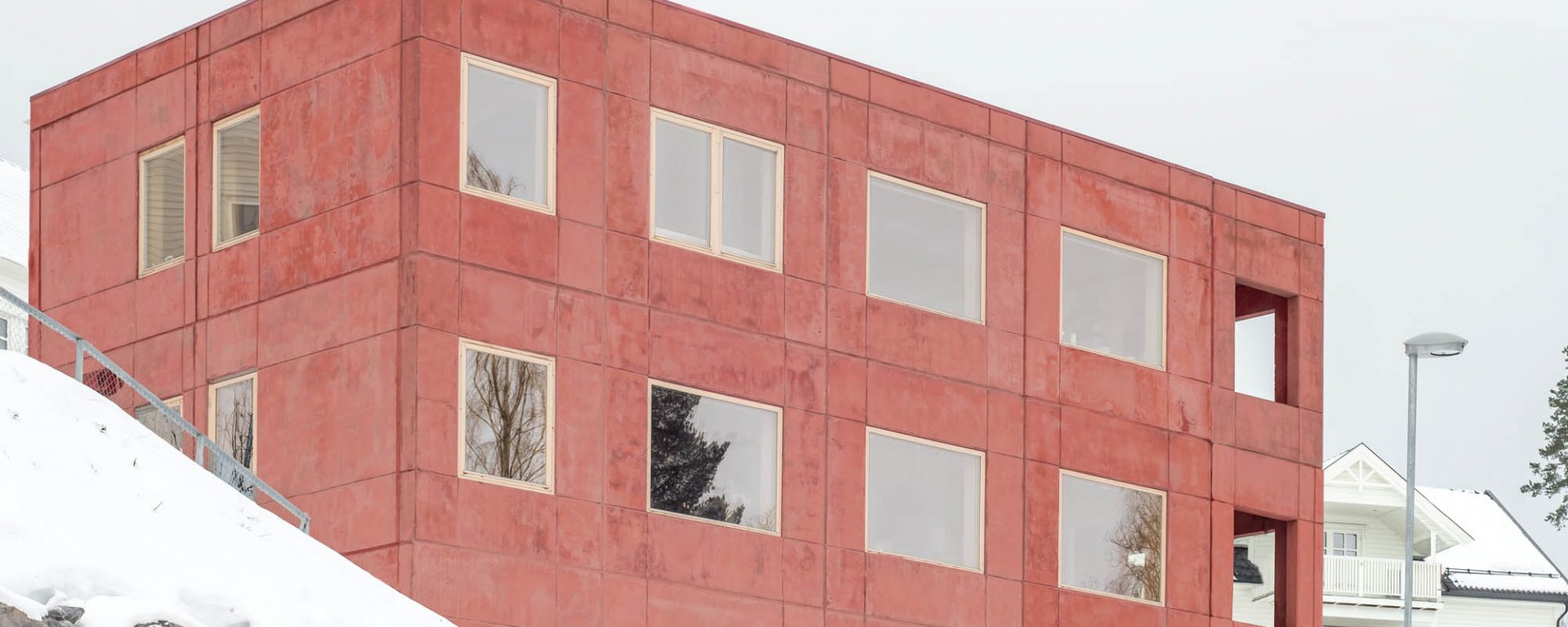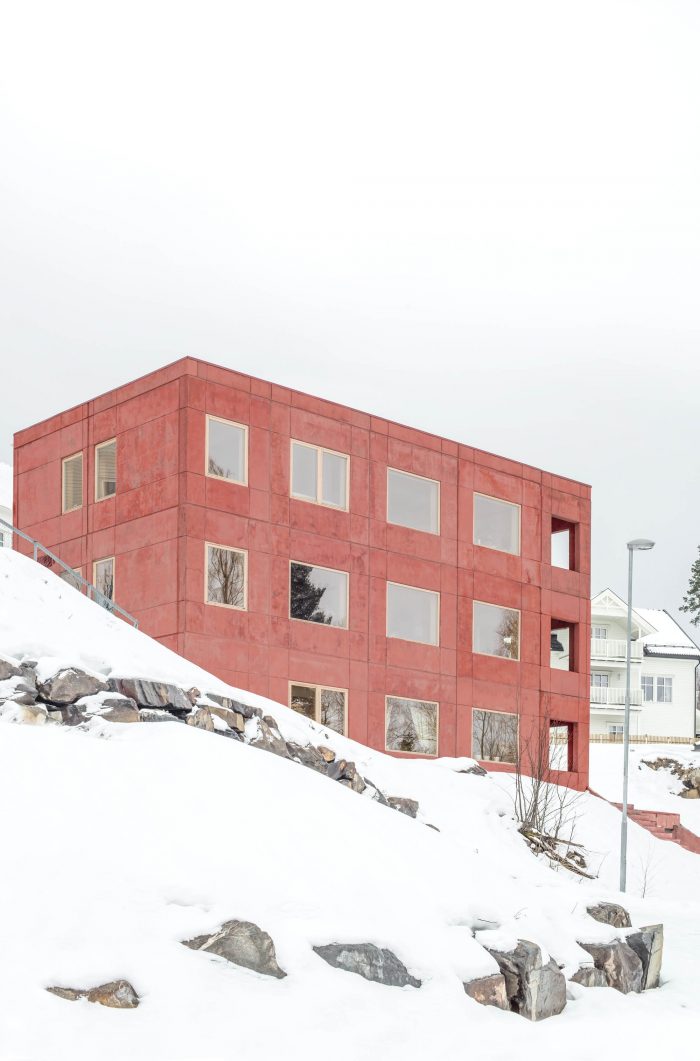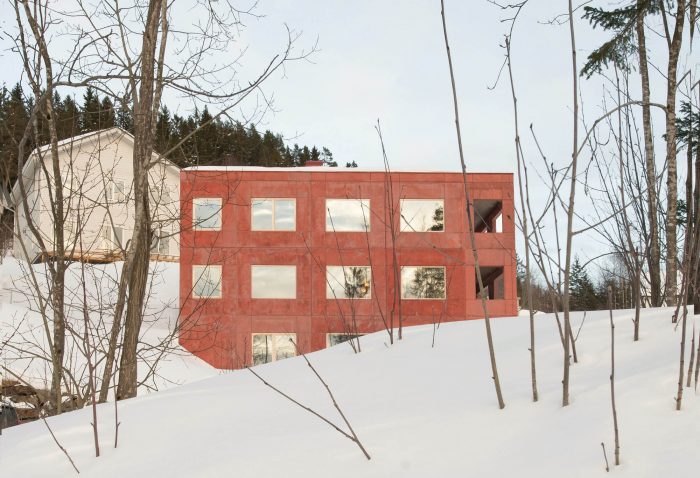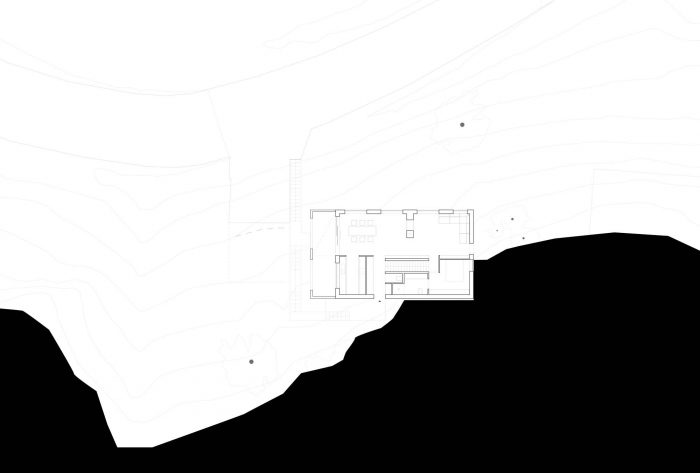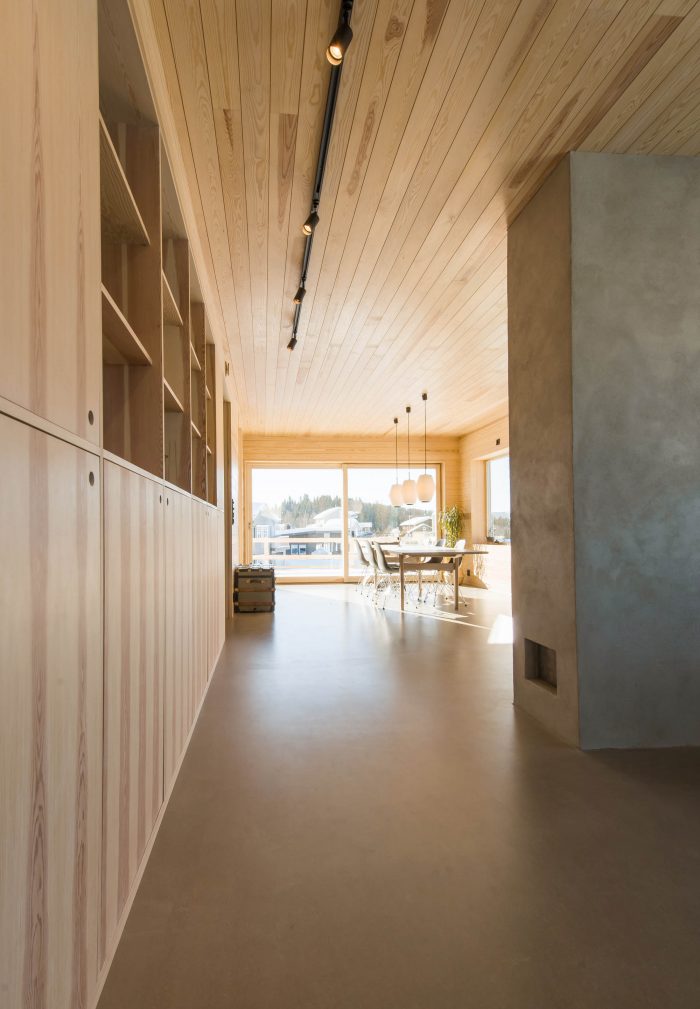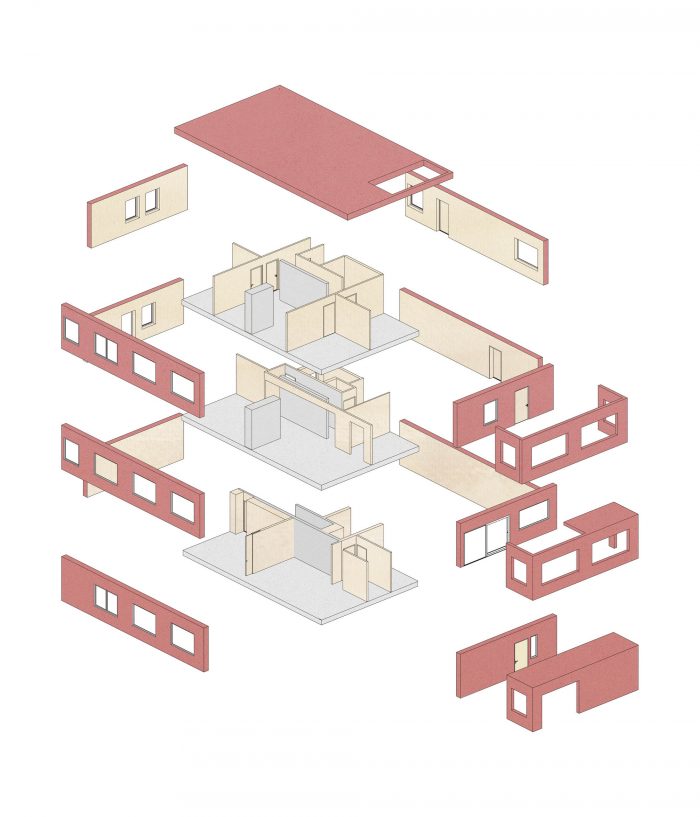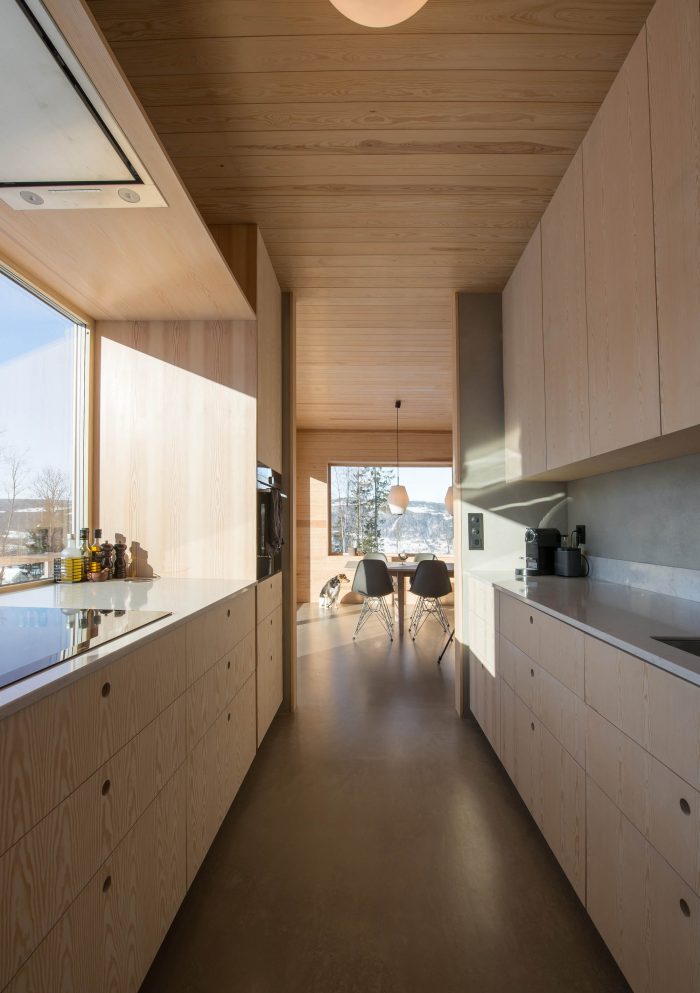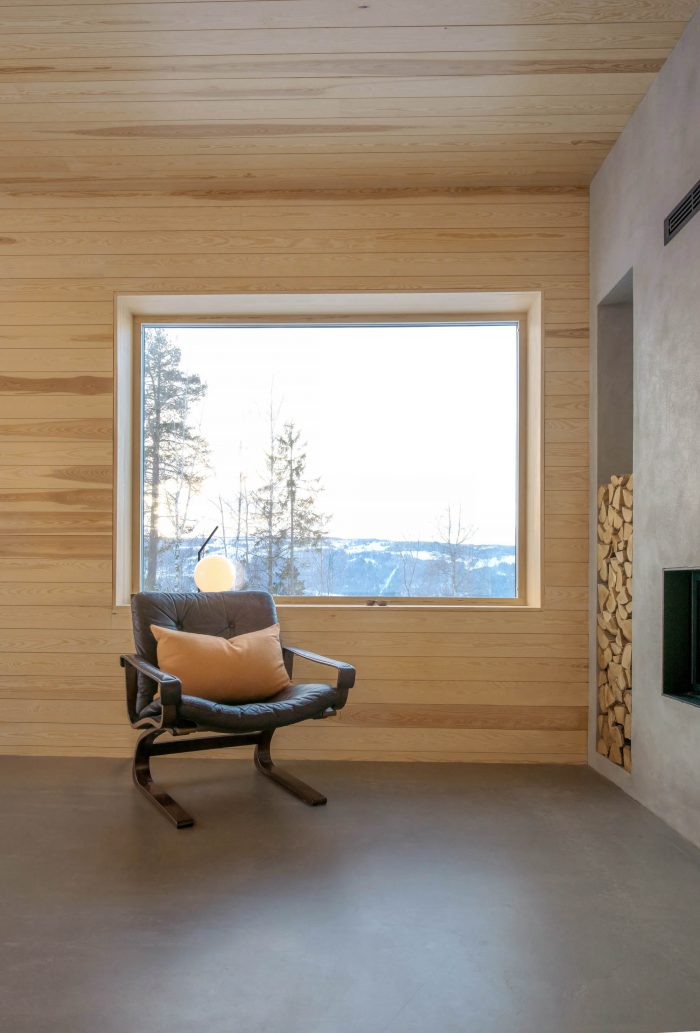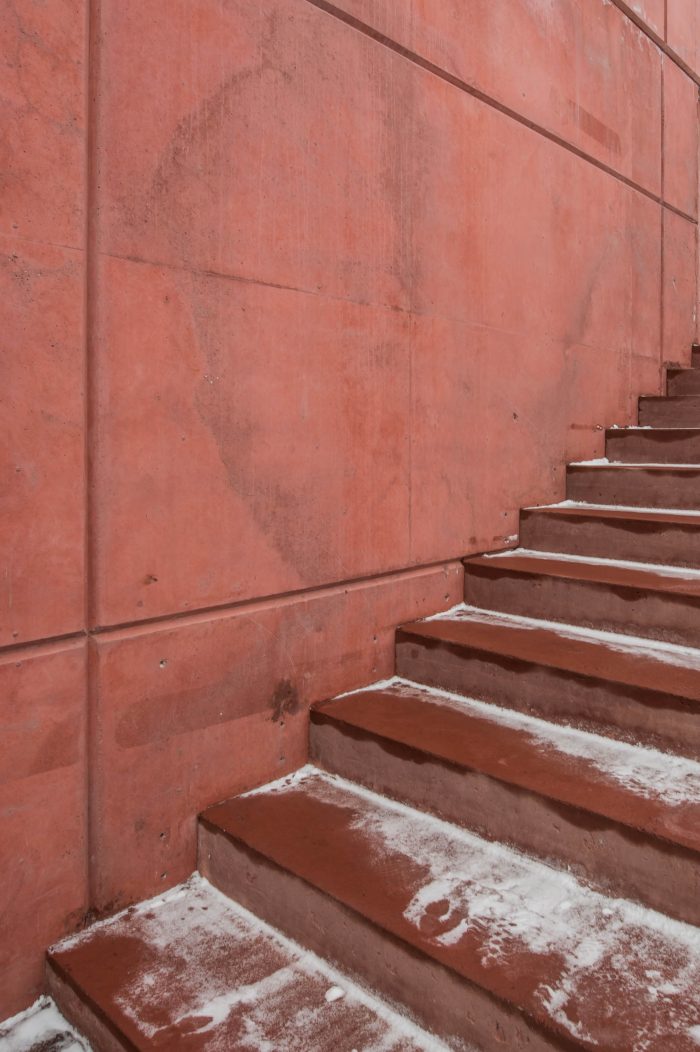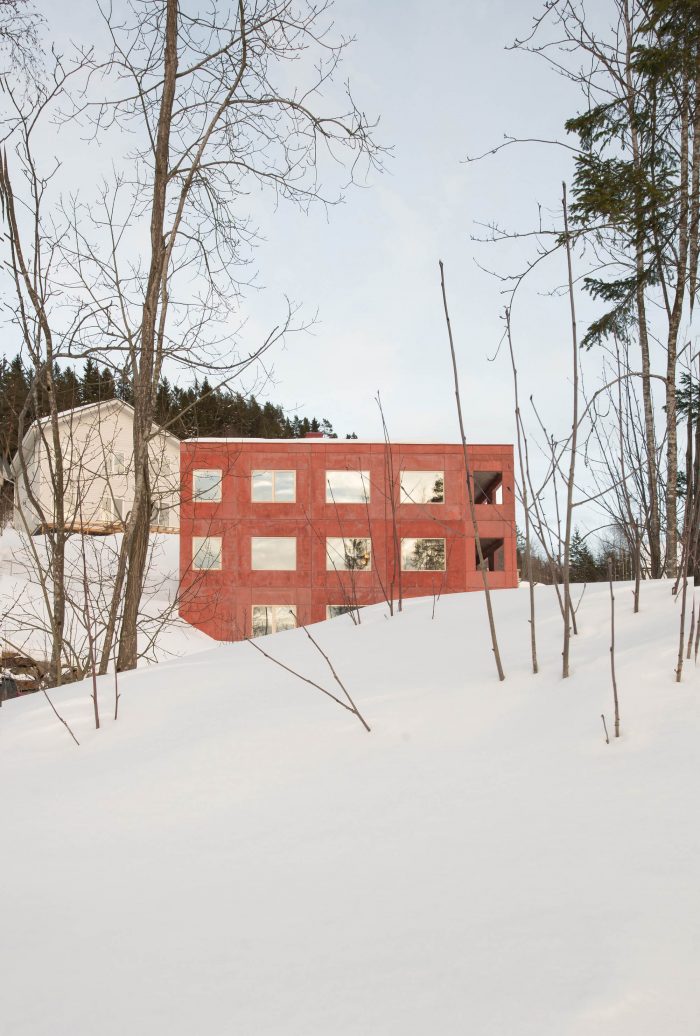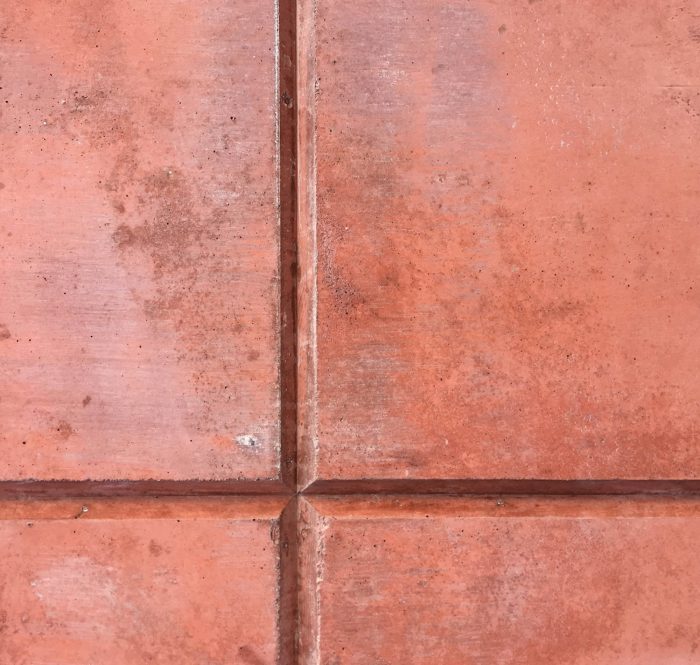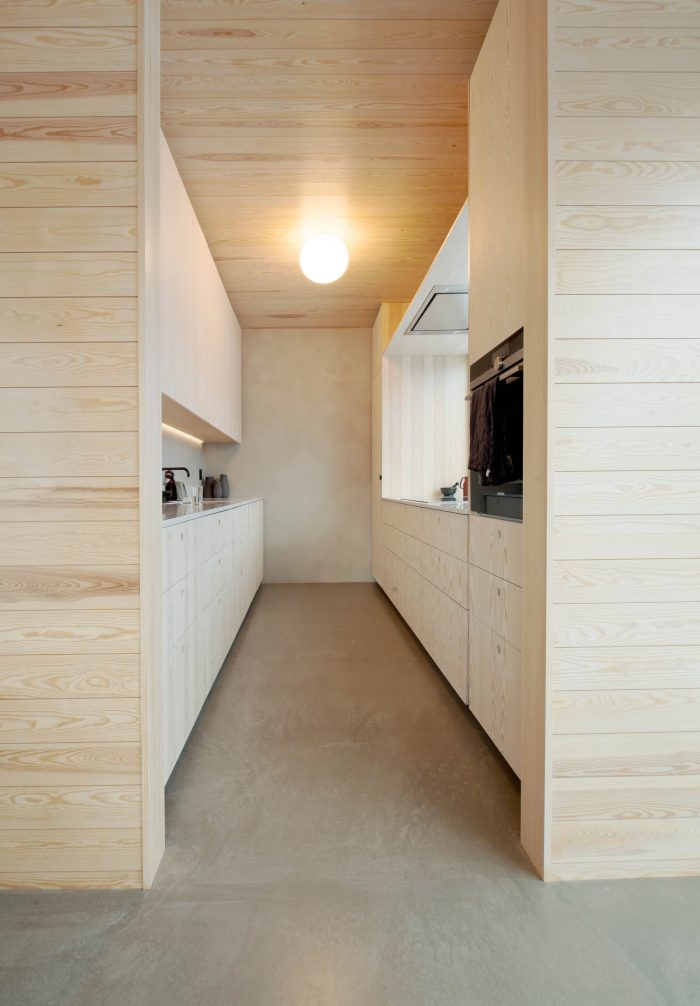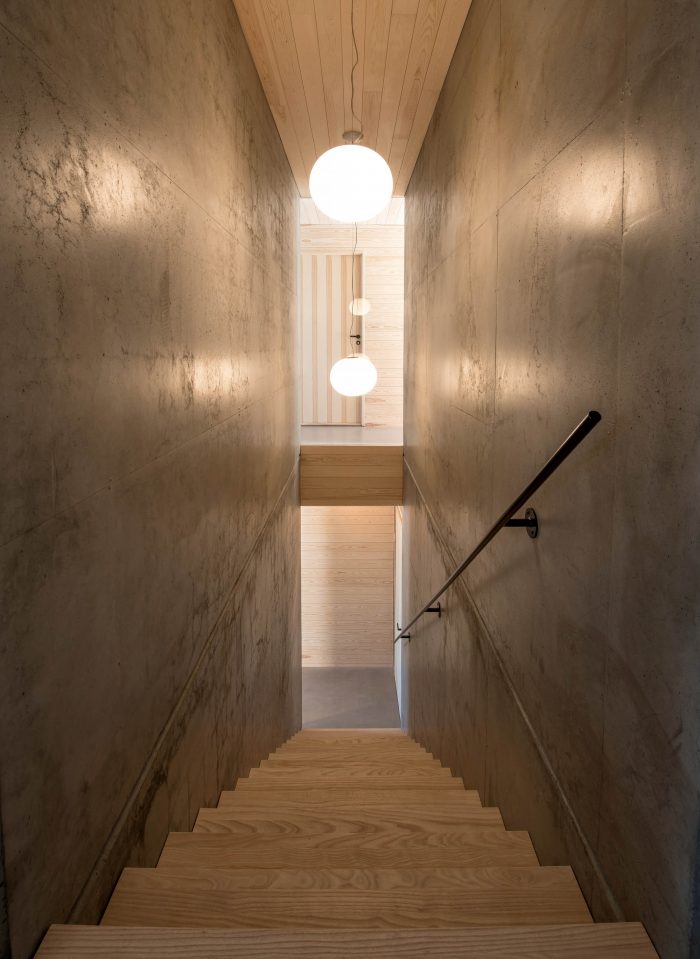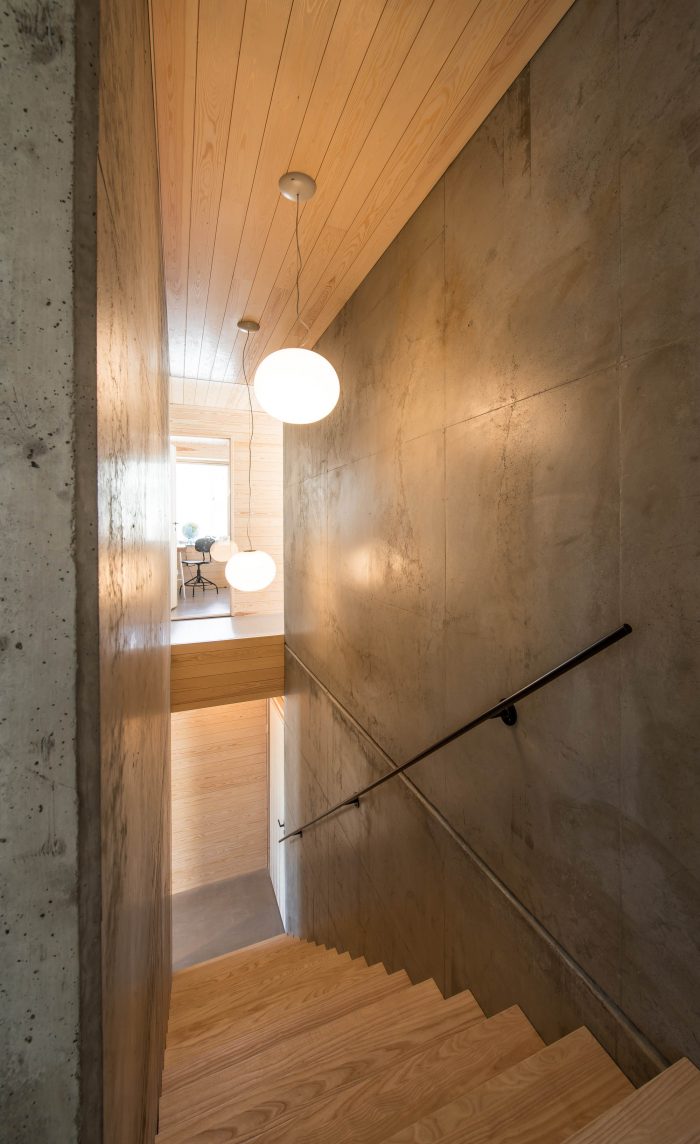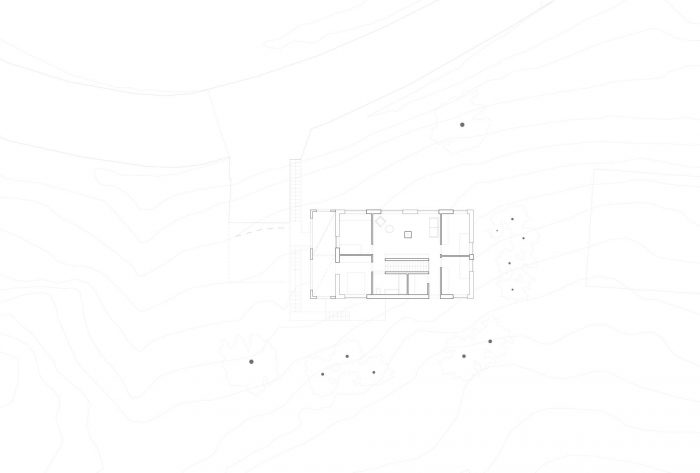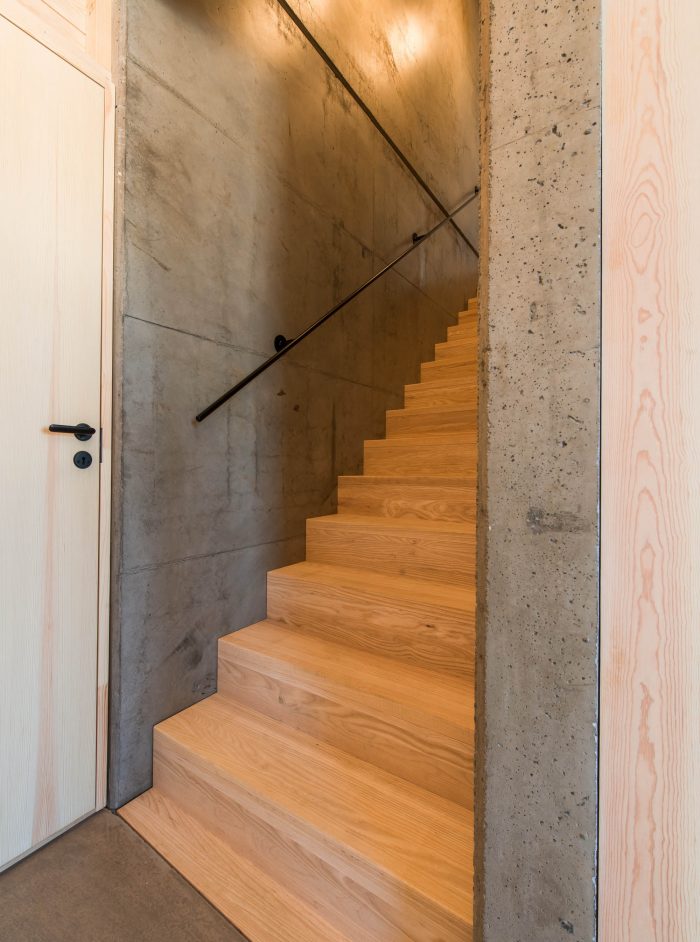红色的房子被设计成一个由保温混凝土构件组成的重复性建筑套件。承重构件独立于内墙布置,为客户提供了一个可以适应变化需求的宽大房屋。合理的构造使客户有可能自己完成大部分的建筑工作。
The red house is designed as a repetitive building kit of insulated concrete elements. The load-bearing elements are arranged independently of the inner walls, providing the clients with a generous house that can be adapted to changing needs. The rational construction made it possible for the clients to do large parts of the construction themselves.
挪威的住房价格很高,除了标准化的住房市场,几乎没有其他选择。作为建筑师,我们希望为不同的生活形式做出贡献;合作住房、自建住房、代际住房和其他家庭共享安排。在Lillehammer,我们有一个为一家三代人建造的项目。由于计划比较大,预算有限,经济成为一个重要因素。我们需要找到既能负担得起又能满足预期用途的解决方案。
Housing prices in Norway are high and there are few alternatives to the standardised housing market. As architects we wish to contribute to different forms of living; co-operative housing, self-built housing, intergenerational housing, and other home-sharing arrangements. In Lillehammer, we have a built project intended for a three-generation family. Due to a relatively large programme and a limited budget, the economy became an important factor. We needed to find solutions that were affordable and that would suit the intended use.
该地的地形很陡峭,在650平方米的场地内有大约10米(32英尺)的高差。为了使方案适合紧凑的场地,同时遵循高度规定,最大限度地提高视野,房子的很大一部分被挖进了山坡。房子与地形的落差呈对角线倾斜,以便在四面形成高质量的户外空间,并从三层楼都能看到风景。
The topography at the site is steep, with a height difference of about 10m (32ft) within a 650 sqm site. A large part of the house is dug into the hillside in order to fit the programme to the compact site, and at the same time follow height regulations and maximise the view. The house is angled diagonally to the fall of the terrain in order to generate outdoor spaces of high quality on all sides and to access the view from all three floors.
基于有限的预算和两个外墙部分在地下,我们选择了预制混凝土元素作为外部建筑材料。所有的外墙,包括地上和地下,都是由保温混凝土(Cellcrete)制成,外层为50mm的彩色混凝土。混凝土混合料中加入氧化铁,形成独特的红色。板块裸露在天花板上,使结构具有可读性。
Based on the limited budget and with two facades partly underground, we chose prefabricated concrete elements like the exterior building material. All facades, both over- and underground are made insulated concrete (Cellcrete) with a 50mm outer layer in pigmented concrete. Iron oxide is added to the concrete mix to create a distinct red colour. The slabs are exposed in the ceiling to make the structure readable.
合理的建筑体系使施工更容易,允许简单的细节处理,进而降低建筑成本。预制构件之间可见的接缝和浇注混合的板块之间的线条,在外墙产生了特有的图案。混凝土构件是重复的,以便重复使用多个构件的模板。单独构件的重复系统使建筑材料在未来有可能被重复使用。
The rational building system makes construction easier, permits simple detailing, and in turn a lower building cost. The visible joints between the prefabricated elements and the lines between the boards in the casting blend generates a characteristic pattern in the facades. Concrete elements are repeated in order to reuse the formwork for several elements. The repetitive system of separate elements enables the potential reuse of the building materials in the future.
在具有高度可持续性的项目中,木材通常被选为建筑材料。然而,当我们回顾历史上的高品质建筑时,它们往往是用石头或混凝土建造的–这些坚硬而坚固的材料经久耐用。在利勒哈默尔的项目中,我们想研究如何建造一座能够吸收使用演变的房子,作为可持续建筑的新假设。这是一个通过适应性或再利用而建造的房子。
Wood is often the chosen construction material in projects with high sustainability ambition. However, when we look back at historical buildings of high quality, they have often constructed in stone or concrete – hard and robust materials that are built to last. In the project at Lillehammer we wanted to investigate how to build a house that can absorb the evolution of use as a new hypothesis for a sustainable architecture. It is a house that is built to last by adaption or re-appropriation.
内墙是独立于承重系统的,这意味着计划可以重新配置。房子可以很容易地适应未来居民或变化的需求。厨房和起居室的内部,无论是墙壁还是天花板,都采用了无节松木。至于房子的其他部分,天花板上的水泥板是裸露的。地面则是用标准的水泥砂浆铺设。松木胶合板的家具是现场制作的。
The inner walls are independent of the load-bearing system, which means that the plan can be reconfigured. The house can easily be adapted to future residents or changing needs. The interior of the kitchen and living room is clad in knot-free pine, both on walls and in the ceiling. As for the rest of the house, the concrete slabs are exposed in the ceiling. The floors are covered with standard cement screed. Furniture in pine plywood is built on site.
合理重复的建筑体系和客户的大量努力相结合,使得建筑成本非常低。通过自己在建房期间的努力,业主对自己的房子有了大量的了解,他们对建房的过程和最终结果都有很强的主人翁意识。
The combination of a rational and repetitive building system and the substantial effort from the clients resulted in a very low building cost. Through their own efforts in the building period, the owners of the house have gained substantial knowledge about their own house and they feel strong ownership of both the process and the end result.
建筑师:Sanden+Hodnekvam Architects
占地面积:300 m²
年份:2020年
牵头建筑师:ohn Sanden, Ingvild Hodnekvam
城市:Lillehammer
国家:挪威
Architects: Sanden+Hodnekvam Architects
Area: 300 m²
Year: 2020
Lead Architects:ohn Sanden, Ingvild Hodnekvam
City:Lillehammer
Country:Norway

